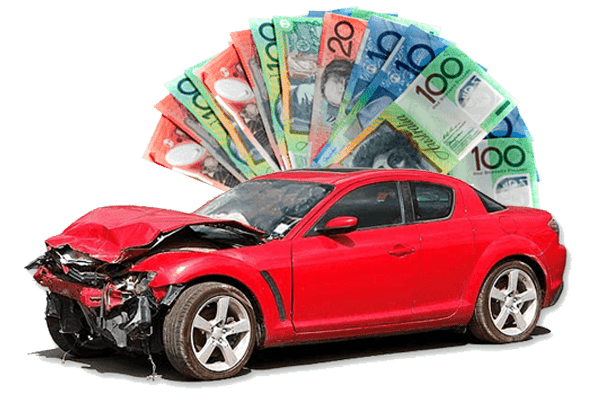Why Some Cars Get Scrapped While Others Get Saved: Inside the Decision Process

Every day, hundreds of vehicles face a critical question: should they be scrapped or can they be saved? The answer depends on several factors—cost of repair, condition of parts, environmental rules, and market needs. Some vehicles receive a new lease on life through repair and reuse, while others head to the crusher.
This article examines the factors that influence whether a car is salvaged or scrapped. It explains the roles of inspectors, market demand, repair costs, and environmental considerations. The aim is to help readers understand how these decisions are made and why they matter.
1. The Condition of the Vehicle
The most basic question is the vehicle’s current state. A car with minor dents or worn-out components may still serve as a source of parts or be fit for repair. Structural damage to the frame, severe engine failure, or irreparable corrosion often leads to scrappage.https://getcashforcarz.com.au/
Inspection professionals assess the vehicle. They check chassis damage, engine condition, and overall wear. They also determine whether the vehicle poses safety risks. If repair outweighs the vehicle’s worth, a decision to scrap it follows.
2. Cost of Repair Versus Market Value
Repair costs include parts, labour, and time. In many cases, replacing a worn transmission or repairing a bent frame costs more than the vehicle’s current market value. The term “economic write-off” applies here.
Insurance companies often use this metric. If repairs exceed a certain threshold—typically 50 to 75 per cent of vehicle value—they may declare the vehicle a total loss. Some owners then choose to collect cash instead of paying for expensive repairs.
3. Availability and Demand for Parts
Even faulty cars may contain parts still in demand. Engines, headlights, alternators, seats and panels have value if they remain in good shape. Salvage yards look carefully for these.
High demand components can tip the scale toward dismantling rather than scrapping. If many buyers seek the engine type or body parts, the vehicle may be stripped for its working items.
4. Environmental Regulations and Requirements
Australia has strong rules around vehicle disposal and processing. Fluids such as brake fluid, engine oil, transmission fluid and coolant must be safely removed and disposed of or recycled. Batteries, air conditioning systems and airbags also require specialist handling.
These rules help reduce pollution and ensure environmental safety. If a dismantler follows proper protocols, scrapping becomes a more responsible choice. If not, the car may become part of illegal dumping or poor disposal—outcomes regulators aim to avoid.
5. Transport and Storage Constraints
A vehicle that is difficult to tow or fully immobilised may incur significant removal costs. If towing a car from a remote location costs more than its salvageable value, scrapping may be preferred even if parts remain usable.
Similarly, space constraints at salvage yards matter. Operations may have limited storage. A severely damaged vehicle that ties up space without return on value may be processed quickly to free storage.
6. The Role of Vehicle Owners
Owners must weigh cost, convenience and environmental impact. Selling a damaged but working part, donating the car, or handing it to a salvage service are options. Making the right choice requires a simple assessment: does the car still offer value by parts or metal, or is scrapping the safest outcome?
For many, the solution lies in handing the vehicle over to services that manage the process. When people look up We Buy Cars Brisbane, they find options where their vehicle is collected and taken to a dismantler or recycler. Services such as Get Cash for Carz help ensure the process aligns with rules and maximises recovery—whether through sale of parts or proper scrappage. This approach makes both decision and action clear for owners.
7. Economic and Social Impacts
Choosing to save a car through part reuse supports sustainability and creates supply for lower-cost replacement parts. This helps lower repair costs for other drivers. Recycled metal also contributes to resource recovery and reduces mining demand.
Scrapping, when done responsibly, supports recycling and material recovery. But irresponsible scrapping or dumping harms land, water, and communities. Operators who follow environmental rules support cleaner industry practice.
8. What Makes a Car Worth Salvaging
Here are common signs that a car may be worth salvaging:
-
Recent engine refurbishment
-
Rare or in-demand part still intact
-
Structurally sound frame
-
Intact transmission, dashboard parts or electronics
On the other hand, signs that scrapping is more reasonable include:
-
Full frame collapse
-
Major fire or flood damage
-
Heavy rust compromising both exterior and interior
-
Repairs exceeding car value
9. How Salvage Yards Make Decisions
Salvage yards receive vehicles and first inspect condition. They may run test diagnostics or visual checks. They record condition, check for hazardous components, and estimate part values.
Tech teams then dismantle working parts. Remaining body is booked for metal recovery. Fluids and hazardous materials are removed in line with environmental law.
This staged process ensures that nothing of value is wasted and harmful elements are dealt with safely.
Conclusion
Whether a car gets saved or scrapped depends on a careful balance of repair cost, condition, part value, local demand and environmental rules. A vehicle which seems ruined may contain treasure. Another that looks repairable may end up scrapped if repair exceeds worth.
Owners who engage with responsible removal services benefit. When people search for We Buy Cars Brisbane, they open the path to clear their property, recover part of the vehicle’s worth and ensure safe handling.






